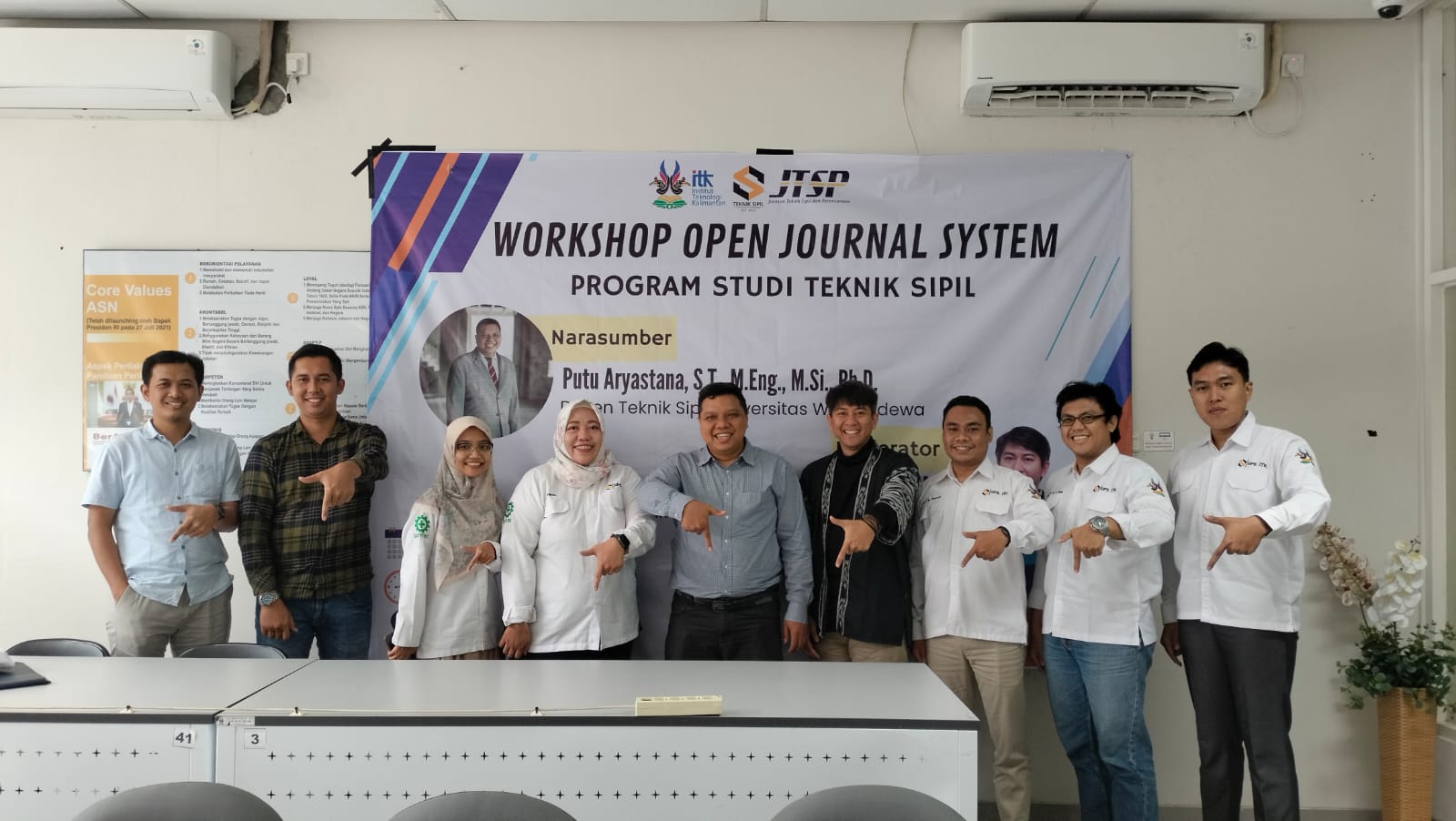
Balikpapan - The OJS workshop aims to add references and journal governance that will help the Civil Engineering Study Program in managing journals. This meeting was opened by the Coordinator of the Civil Engineering Study Program, Dr. Ir. Hijriah, S.T., M.T. This activity was attended by resource persons from the Civil Engineering Study Program of Warmadewa University Bali, namely Putu Aryastana, S.T., M.Eng., M.Si., Ph.D. who presented material on “Open Journal System (OJS) Management is the arrangement and management of an open-source platform for online journal publication” and the activity was led by the moderator, Riyan Benny Sukmara, S.T., M.T.. This activity was held in Meeting Room A201 Building A ITK, Balikpapan on August 22, 2024, the participants who participated in this worshop amounted to 8 people who were Koorprodi and Civil Engineering Lecturers.
.jpeg)
Here is a further explanation of OJS:
1. Philosophy and Objectives:
- OJS is designed to facilitate the publication of scientific journals in an open and transparent manner. The goal is to increase access, visibility, and impact of published research.
2. Key Features:
- Editorial Process Management: OJS allows journal managers to manage the entire editorial workflow, including manuscript acceptance, peer review process, editing, and publication.
- User Interface: OJS provides a user-friendly interface for authors, reviewers, editors, and readers.
- Monetization: OJS supports various business models, including open access, subscription, or article processing charges.
- Customization: OJS can be customized to suit the visual identity and specific needs of each journal.
- Indexation: Journals using OJS can be listed and indexed in various leading journal directories and databases.
3. Roles and Responsibilities:
- Authors: Can upload manuscripts, track the status of the editorial process, and access the published version.
- Reviewers: Can accept and complete peer review tasks assigned by the editor.
- Editor: Responsible for the overall management of the editorial process, from manuscript acceptance to publication.
- Journal Manager: Manages journal settings, users, themes, and other aspects.
4. Advantages of using OJS:
- Increases journal visibility and impact.
- Facilitates an efficient and transparent editorial process.
- Provides features for journal monetization and sustainability.
- Allows integration with indexing systems and digital libraries.
- Free and open-source, so it can be accessed and used by anyone.
The following is a more detailed explanation of the stages in the establishment of the Open Journal System (OJS):
1. Planning and Preparation:
- Identify the goals and business model of the journal (e.g. open access, subscription, or publishing fee).
- Determine the editorial team and organizational structure of the journal.
- Setting up resources, such as domain, hosting, and operational budget.
2. OJS Installation and Configuration:
- Downloading and installing OJS on a server or hosting platform.
- Configuring basic settings, such as journal information, language, and theme.
- Creating and managing users (authors, reviewers, editors, managers).
- Establishing editorial workflows, including acceptance, peer review, and publication processes.
3. Content and Metadata Management:
- Create and manage issue structure (volume, number, articles).
- Upload initial content (articles, journal information, etc.).
- Manage article metadata, such as title, abstract, author, and keywords.
- Integrate citation and bibliography tools.
4. Access and Policy Settings:
- Set open access, subscription, or publishing fee policies.
- Configure payment options and subscription settings.
- Set up copyrights and licenses that fit the open access model.
5. Promotion and Marketing:
- Develop marketing and promotion strategies to attract authors and readers.
- Optimize SEO (Search Engine Optimization) to increase visibility.
- Engage with leading journal directories and indexes.
- Using social media and online marketing tools.
6. Continuous Maintenance and Development:
- Updating OJS to the latest version to ensure security and latest features.
- Fixing bugs and dealing with technical issues that may arise.
- Collecting feedback from users and continuously improving the journal.
- Developing new features or integrations as per the needs of the journal.
7. Analytics and Reporting:
- Monitor and analyze usage statistics and journal metrics.
- Prepare periodic reports for the editorial team and stakeholders.
- Use these insights to make strategic decisions and continuous improvement.